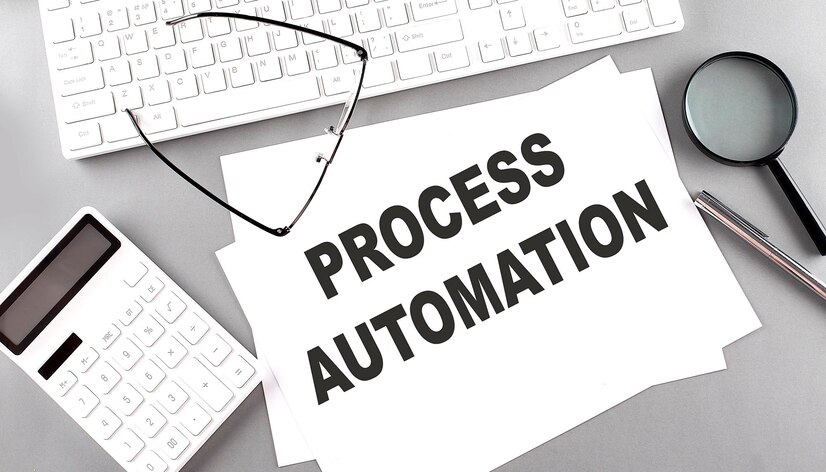There are lots of benefits that come with implementing effective business process automation, such as enhanced efficiency, reduced errors, increased productivity, and process consistency. For these benefits to be realized, process automation might be applied correctly.
Incorrect application and implementation of business process automation is dangerous to the business as it can lead to a range of issues, including increased operational inefficiencies, heightened error rates, disrupted workflows, wastage of resources, and diminished productivity. Additionally, it can exacerbate existing problems, create new bottlenecks, and lead to employee frustration.
This is not to scare you but to let you know that if you must apply business process automation, you must do it the right way, following the right steps. Here in this article, we will look into the simple steps and best practices for effective business process automation. Following this guide will help you achieve success in your process automation implementation.
Simple Steps for Effective Business Process Automation
After identifying the signs that your business is ready for automation, here are the simple steps to follow when implementing business process automation to
Step 1: Select the Process(es) to be Automated
The first thing to do is to analyze your entire work process and identify those that are repetitive, labor-intensive, or prone to human error. Processes or tasks that involve a high volume of manual input, frequent updates, or routine approvals are prime candidates for automation.
After identifying them, you have to streamline your focus on automating those with the most significant impact on your business objectives. There are three factors you must consider before selecting a process or task to automate. The process or task must pass these three stages. They are process complexity, the potential for cost savings, and the alignment with strategic goals.
Step 2: Clearly Define/Describe the Process
Create a visual representation of the process using flow charts or SIPOC charts. The flowcharts help you to illustrate the sequence of steps, which gives you a clear description of what the process entails. The SIPOC charts enable you to outline Suppliers (i.e. sources of inputs into the process and other dependencies), Inputs, Processes, Outputs, and Customers (beneficiaries of the process output/ outcomes), which gives you a comprehensive overview of the workflow.
Additionally, outline the decision points, responsibilities, and interactions between different roles for a clearer overview of the process. This detailed documentation provides a clear roadmap for automation. This clarity is essential in helping you identify significant areas that ought to be automated.
Step 3: Pick a Process Automation Platform
There are different types of automation platforms and finding the suitable one for the process or tasks you want to automate is important to ensure success. Conduct thorough research on automation platforms, considering their features, user interface, scalability to accommodate future growth, and integration capabilities with existing systems.
Choose the platform that fits your budget and automation needs. Also, you have to ensure the platform is flexible, provides value for money, and can be adapted to your unique business processes and goals.
Step 4: Create Automated Forms and Workflows on the Platform
After identifying the best automation platform, the next step is to develop automated forms and workflows based on the documented process. Ensure the forms capture all necessary data and workflows that accurately reflect the process steps and decision points. Customize the platform’s features to align with the defined process.
Next, test the automated forms and workflows to validate their functionality. Ensure they are functioning as intended without error or inefficiencies. If you notice an error, ensure you review it and fix it.
Step 5: Go Live, Collect Data, and Optimize
This final step involves three stages. The first stage is launching the automation system and monitoring its performance in a live environment to assess the effectiveness and efficiency of the automation. The second stage is gathering feedback from users and stakeholders to identify any issues or areas for enhancement. Carefully re-assess the performance data to ensure that there are no errors or gaps that need addressing.
The third stage is using the collected feedback and data to improve the automated workflow and enhance its performance. This third stage is an ongoing stage that entails continuously reviewing and refining the automation system to ensure it remains aligned with evolving business needs and goals. This ensures its efficiency at all times.
Best Practices for a Successful Business Process Automation Project
Here are the practices you should incorporate or adhere to in your organization to ensure your business process automation project is implemented successfully and functioning optimally.
1. Have a Clear Understanding of Tasks
Before implementing process automation, ensure that all stakeholders, from employees to managers, understand their specific roles and tasks in the project. When each member understands their responsibilities and the deadlines they need to meet, this helps them gain clarity, which is important to avoid confusion and delays during the project.
For a clearer understanding among the stakeholders, create a comprehensive project plan that outlines every stage of the automation process, from planning to execution. Include timelines, milestones, and task assignments to ensure the project stays on track. Monitor the process and ensure everything is going as planned.
2. Define Clear Goals
Clearly state the goals you have for the automation project. The goals should be Specific, Measurable, Achievable, Relevant, and Time-Bound (SMART). When the goals are SMART, it will be easy to be measured. For example, a goal could be to reduce manual processing time by 50% within six months. At the end of six months, if manual processing has been reduced by 60% or more, you can say that the goal has been achieved.
It is important to understand that automation projects can face unexpected challenges. So, periodically keep track of the progress to ensure you are on the right track. If necessary, adjust the goals to reflect new business needs or unforeseen changes that arise during the project.
3. Invest Adequate Time in Training Employees.
Automation is only as effective as the people who use it. To ensure the successful execution of the automated project, train your employees to understand how to operate it. Training should cover not only the technical aspects of the platform but also how the newly automated processes will change daily workflows.
You have to ensure they fully understand the technology and the new workflows that result from the automation. This will help them to efficiently navigate their new responsibilities, avoid mistakes, and fully utilize the automation system’s capabilities.
4. Adopt a Long-Term Outlook
The business environment evolves, and so do the business needs. You have to ensure that the automated system is flexible to accommodate adjustments and changes in technology or operational requirements. Also, it should be scalable to allow for expansion to accommodate the business growth without requiring a complete overhaul.
You have to note that automation is not a one-time solution but requires continuous monitoring and regular updates to stay effective. So, schedule regular maintenance and updates to ensure the system operates smoothly and adapts to new technological advancements or business needs. This keeps the system from growing obsolete and ensures it remains aligned with long-term business goals.
5. Use Readymade BPA Solutions Where Available
Instead of building every automation solution from scratch, you can use pre-built Business Process Automation (BPA) solutions already available on the market. There are BPA solutions catering to common business needs in the market, such as HR, finance, supply chain management, and inventory.
You can easily implement these solutions. All you will need to do is customize them to fit your business’s unique needs. The advantage of these ready-made BPAs is that they help to save time and money.
Final Words
Take the next step toward growth by transforming your business processes. Reach out to Mac Adebowale Professional Services today! Our expert team is readily available to help you navigate the process smoothly, avoid costly mistakes, and maximize the potential of your automation efforts. Contact us now at emails@macadebowale.com or macadebowaleadvisory@gmail.com, and let’s get started!





